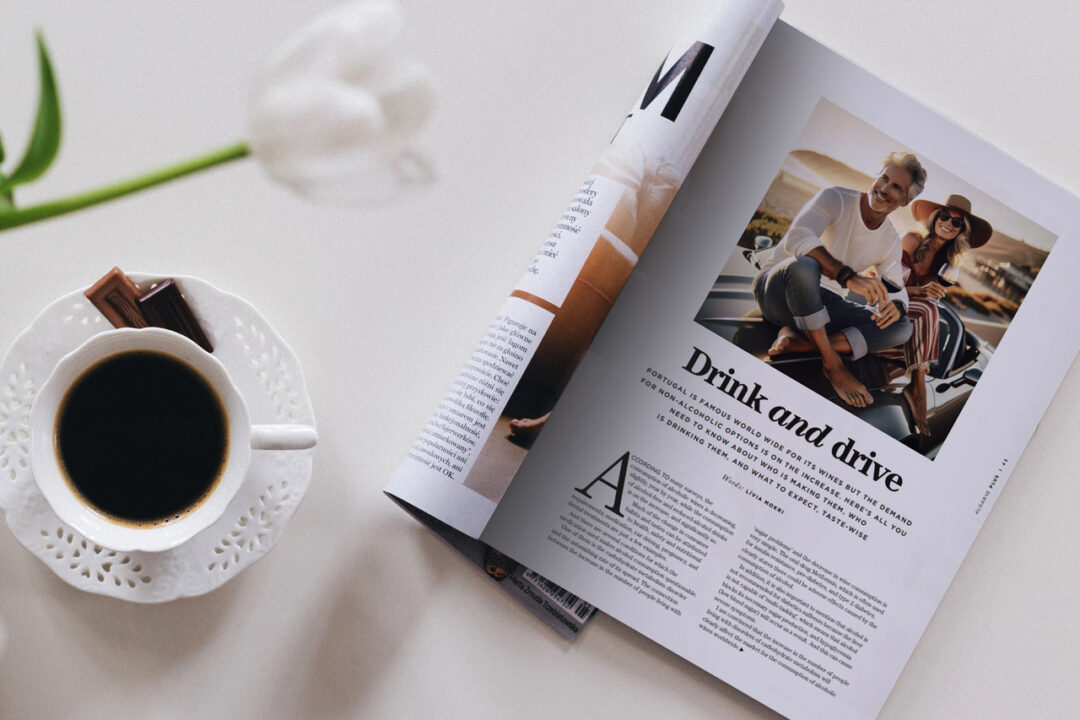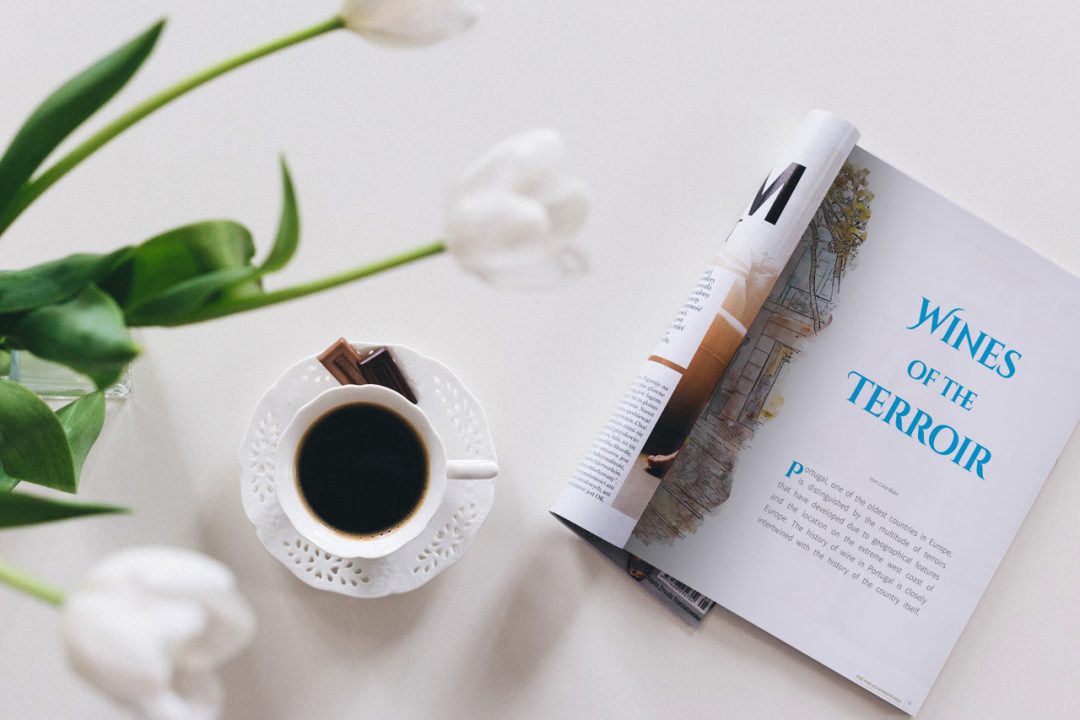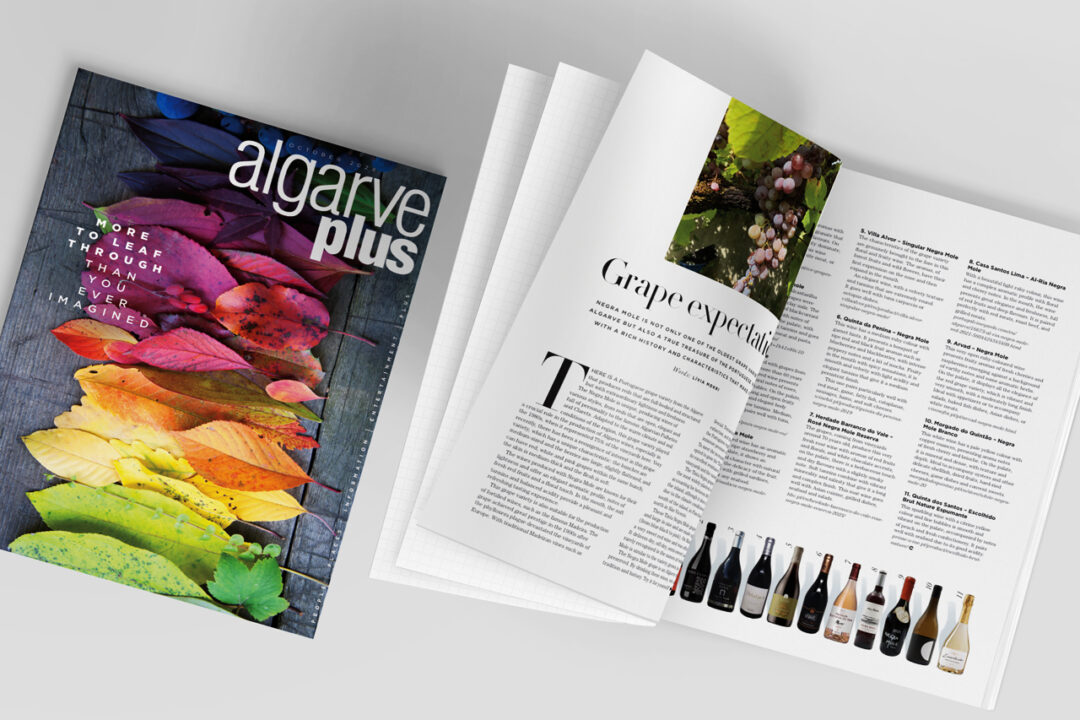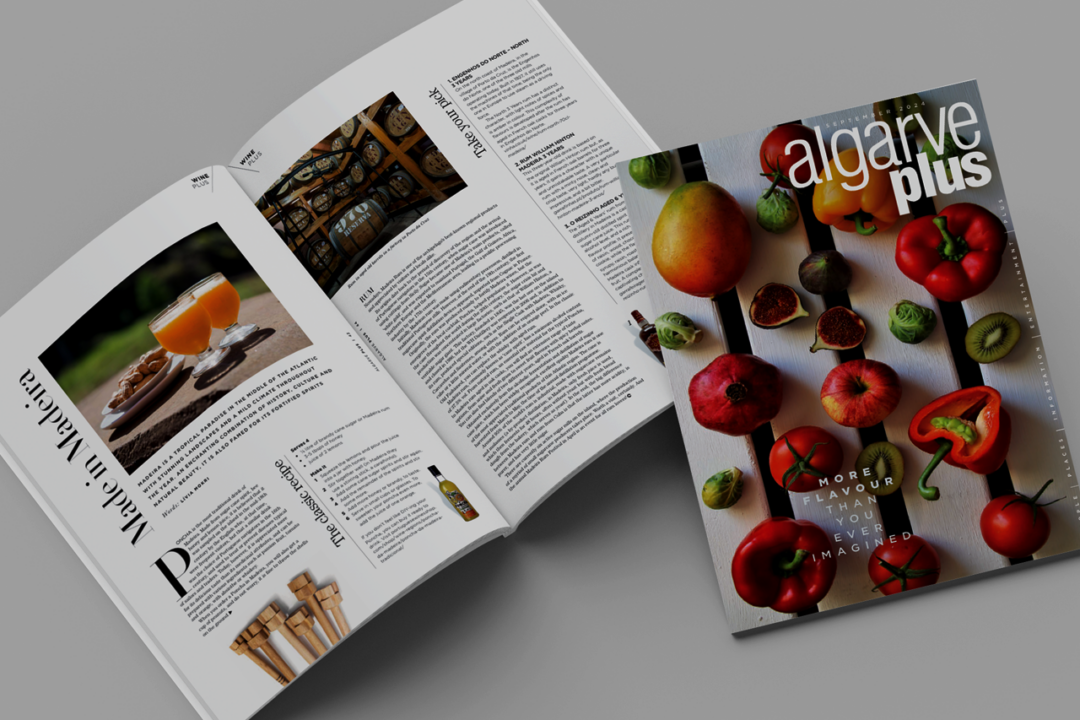Drink and Drive | Portugal is famous worldwide for its wines but the demand for non-alcoholic options is on the increase. Here’s all you need to know about who is making them, and what to expect, taste-wise.
I am happy to share that the May issue of the Algarve Plus Magazine has already been published, with my new writing!
The magazine is readable online or downloaded for free here.
Happy reading!
Or read here my whole article:
Drink and drive
To us in Portugal, which is famous for its wine production worldwide, it seems almost unimaginable to replace wine with non-alcoholic drinks at any time. However, we may find ourselves in a situation where no alcohol is allowed.
Based on many surveys, the consumption of alcoholic wines is decreasing year by year. Meanwhile, it can already be seen that the consumption of alcohol-free and reduced-alcohol drinks will increase significantly within a few years. The spread of these products can be traced back to health and nutritional reasons. It is therefore worthwhile to be aware of the basic concepts and information related to non-alcoholic wines.
There are cases when all kinds of alcohol consumption can be prohibited for months or even years. Antibiotics, car driving, pregnancy, and even dental treatment are just a few of these examples. These situations or short periods can be very unpleasant. Especially if, for example, we have to survive a company dinner or a meeting with friends, smiling next to our glass of water or lemonade.
Unfortunately, there are also several diseases for which the medication used makes even moderate alcohol consumption impossible.
One of them is none other than the carbohydrate metabolism disorder and the astonishing rate of its spread. The connection between the increase in the number of people living with “sugar problems” and the decrease in wine consumption is very simple. The oral drug metformin, which is extremely often used for insulin resistance, pre-diabetes, and type 2 diabetes, strictly prohibits the consumption of alcohol.
In addition, it is also important to mention that, whether it is medicine or not, alcohol consumption is not recommended for diabetics (both type 1 and type 2) because the liver is not capable of “multi-tasking”. This means that alcohol consumption blocks the necessary sugar production in the liver. For this reason, there is a risk that hypoglycemia (low blood sugar) will occur as a result of alcohol consumption. And this can cause severe symptoms.
I am convinced that the increase in the number of people living with disorders of carbohydrate metabolism will clearly affect the market for the consumption of alcoholic wines worldwide.
Of course, you can live without wine and alcohol, but why? In addition, an event where everyone drinks but we are not the only ones is bearable once in a while, but in the long run it is downright frustrating. But, luckily there is a solution! De-alcoholic wines can be a solution in these cases. Filled from a wine bottle, they are served in a wine glass and look like wine. We don’t even have to explain why we don’t drink alcohol, because no one will notice.
It is important to clarify that, as a wine expert, I am of course a fan of real wines – not de-alcoholized wines. The purpose of this article is not to convince readers to switch their alcoholic wines to non-alcoholic wines starting tomorrow. I have been dealing with the positive physiological effects of wine on health for many years and I fully support moderate wine consumption. I only recommend non-alcoholic wines to those who cannot drink alcohol for any reason.
Of course, non-alcoholic wines do not bring the taste complexity of real wines. But, for lovers of gastronomy who cannot drink alcohol, the existence of alcohol-free wines can be a ready salvation. It is much easier to create wine-food pairings with non-alcoholic wines than with a cola, for example.
What is non-alcoholic wine?
The history of non-alcoholic wine began at the beginning of the twentieth century. The German Maria Jung sold the wines of their family estate all over Germany, but she encountered resistance in a surprising number of places. A significant number of the people approached refused the purchase citing the recommendation of the doctors. Upon returning home, Maria told her family about her failed business trip. His son Carl Jung (not to be confused with the Swiss psychiatrist of the same name) then decided to find a solution to the problem. The result: in 1908, he patented his distillation-based de-alcoholization process.
In 2021, the European Union created the legal background in its member states for the production of wines with reduced alcohol content. The amendment states that wine, champagne, and sparkling wine can undergo a full or partial de-alcoholization process.
This kind of wine also can be made from any type of grape: wineries typically use the varieties that appear in the alcoholic selection for these items as well. Although their smell always brings the wine character, their taste is less so, so for people used to alcoholic wines, the enjoyment value will never be the same. Non-alcoholic wine can be both sweet and dry. There is currently much more of the former on the market. The reason for this is that the mentioned loss of aroma is often tried to be remedied by adding sugar.
Non-alcoholic wine is therefore not the same as grape juice or children’s sparkling wine, since it is made from fermented, alcoholic wine by extracting the alcohol. Alcohol-free wine is a wine with an alcohol content of less than 0.5% by volume. (If the alcohol content of the wine falls below 10 percent by volume as a result of alcohol reduction, the label must indicate “de-alcoholized wine”.)
How the non-alcoholic wine is made?
Currently, two technologies are available for complete or partial alcohol removal.
1. During vacuum distillation, the alcohol is separated from the wine by heat treatment. Alcohol and water have different boiling points, and unwanted flavors can be eliminated in an airtight space. In very simple terms, the wine is heated until the alcohol evaporates from it. With this process, an alcohol content of up to 0 percent can be achieved.
2. In membrane separation, different membranes separate alcohol molecules based on size. With one version of membrane separation, the so-called reverse osmosis, the alcohol content of wines can be reduced with much less loss of aroma. However, the procedure is expensive, and below 0.5% alcohol content, it can no longer be used economically.
In general, it can be said that the drinks made with the above procedures bring out the wine character quite well in aroma, but as for the taste, there are very different opinions. But for those who don’t drink alcohol, it’s a good way to taste wine.
Non-alcoholic wines are now produced almost everywhere in the world, although of varying quality. There are good ones and terribly bad ones as well.
The majority of Portuguese winemakers are not open to making alcohol-free wines yet. However, the demand for these products is constantly increasing and it seems that this trend will continue in the future.
What should we look for when buying non-alcoholic wines?
The sugar content of de-alcoholized wines varies widely. There are many more sweet de-alcoholized wines than dry ones. The main reason for this is that during the removal of alcohol molecules, a significant loss of aroma often occurs, as a result of which the finished wine becomes quite empty in taste. And this can be remedied by adding sugar.
If someone has a disorder of carbohydrate metabolism (diabetes, insulin resistance), then you should pay special attention to buying de-alcoholized wine that really has minimal sugar content! Luckily, the back label of this kind of wine shows the calories, carbohydrates, sugar, and other ingredients. This greatly helps customers to choose the right product for their diet.
These wines are also made from grapes, and the carbohydrates in them are considered to be quickly absorbed. That is why it is worthwhile and recommended to eat pairing with something that slows down the absorption of the wine (seeds, olives, fatty cheese, for example).
De-alcoholized wines should be treated in their place. If we try to compare these products to the alcoholic wines we like, we can easily be disappointed. But if we approach the consumption of non-alcoholic wine in such a way that we are happy that there is finally no water or soft drink in our glass and that it smells or even tastes like wine, then we may be in for a really pleasant surprise.
Who makes non-alcoholic wine in Portugal?
José Maria da Fonseca was a pioneer in terms of creating the first Portuguese alcohol-free wines. They remove the alcohol through vacuum distillation at low temperatures that help maintain the natural aromas and flavors of the grape.
Their Lancers brand was the first Portuguese alcohol-free wine, launched in 1944. The brand’s white wine is a blend of the Fernão Pires and Arinto grapes. The lime green colored wine has tropical fruit aromas of pineapple. A light, soft, fruity and refreshing drink with a medium persistent finish.
Their rosé is a pleasant, fine, light, and slightly sweet wine with flavors of red berries and tropical fruits, and only 10% alcohol content.
Their O%riginal brand arrived with a complete range of alcohol-free monovarietal wines available in red, white and rosé, full of aroma and taste typical of the grape varieties.
The Syrah red grape variety gave rise to the red and rosé, revealing smooth profiles with exuberant aromas that are easy to drink. The O%riginal non-alcoholic white is made from the Moscatel Galego grape brings all its citrus and floral characteristics so typical of the grape variety, in a lime green color, where the fruity and refreshing flavors stand out together with the smoothness of an easy white wine.






No Comments Found